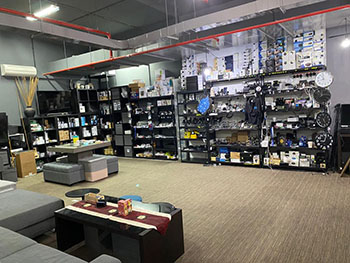
Common injuries due to elderly falls
Falls are the most common cause of injuries among senior people and the top reason for a hospital admission for trauma. Advanced age substantially increases the likelihood of hospitalization after a fall. Falls account for 88% of all fractures among people aged 60 years or older.
As the brain ages, its dura becomes tightly adherent to the skull, which makes epidural (extradural) haematomas uncommon. A progressive loss of brain volume leads to an increase in the space around the brain that is thought to protect it from contusions, but makes subdural haematomas more likely. Patients over the age of 55 years who are anticoagulated have a higher frequency of isolated head trauma, more severe head injury and a higher mortality. Even mild head injuries, particularly in patients with pre-existing cognitive impairment, may lead to permanent neurological damage. If there is a skull fracture and an associated hemiparesis, a traumatic intracranial haematoma should be assumed and not a stroke. Similarly, confusion lasting more than 12 hours after head injury, even in a patient with no skull fracture, is an indication for a CT scan. Any deterioration demands immediate action and a CT scan should be obtained in all patients who are unconsciousness for more than 5 minutes after head injury. The outcome is extremely poor in elderly patients who have sustained head injuries sufficient to cause immediate coma that persists after correction of hypoxia and hypovolaemia. Neurosurgical intervention is not warranted for most of these patients.
Rib fractures often complicate even mild blunt trauma to the chest in old people. The presence of fractured ribs on the chest X-ray is an important indicator of severity of injury and outcome, as mortality increases with increasing number of rib fractures. Because they are poorly tolerated, these patients must be watched carefully and the need for mechanical ventilation frequently reassessed. Those with more severe blunt chest trauma, such as those with penetrating injuries, are managed in the same way as younger patients.
It must be remembered that old people are intolerant of shock and unnecessary laparotomy. Their assessment therefore demands a sense of urgency and a high degree of clinical acumen. Those who have a history or clinical evidence of previous major abdominal surgery should have a CT or ultrasound scan of the abdomen rather than diagnostic peritoneal lavage.
In old people with multiple injuries, fractures must be stabilised to permit optimal positioning and movement, both for immediate management and later rehabilitation. While isolated fractures of the humeral shaft are managed conservatively, there is no logic to such management in a patient with leg injuries who will need to use a walking frame or crutches for mobilisation. The aim of treatment should be to undertake the least invasive, most definitive procedure with a view to early mobilisation as soon as other problems permit. Prolonged inactivity and disuse may seriously limit the eventual functional outcome.
Hip fracture is an increasingly common problem in Europe. In the UK around 70,000 patients suffer a hip fracture each year increasing at approximately 5% per annum and projected to reach 120,000 cases per year by 2015. Seventy-five percent of patients are over 75 years of age and 80% are female. The average length of stay in hospital is 30 days, with a 30-day mortality of about 10%. Hip fractures account for 20% of all orthopaedic bed occupancy. There are now a number of recommendations for ‘best practice’ for the management of this increasing burden on healthcare. The following are based on the Scottish Intercollegiate Guidelines Network.
Elderly patients have a particularly high mortality rate and are extremely vulnerable to less than optimal management. A system of trauma care must be prepared to cope with this group of patients and their special needs. The trauma team must be aware of the anatomical and physiological changes that accompany ageing and how these factors, together with the effects of co-existing illnesses and medications, make special demands on their skills. Oversights and thoughtlessness in initial management of patients may have serious adverse consequences on recovery and eventual hospital discharge. Elderly patients should be informed of what is happening and, where possible, be encouraged to participate in treatment decisions. Not all old people are demented. This does not mean they should necessarily receive identical treatment to younger people; instead, they must be managed in a way that is appropriate to their needs in the light of the likely outcome.









